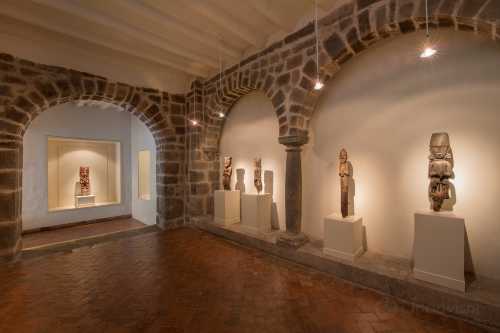Popular Trip Moments
The capital of the Inca Empire, Cusco. | Detailed Guide to Cusco's Must-See Attractions in Peru | Cusco's Main Square: Plaza de Armas | Walking the Ancient Path: Inca Trail to Machu Picchu | Cusco: A City of Chaos, Cuisine, and Cafes | Night view of Cusco | Hotel San Agustin Plaza | Overseas travel Peru Korean restaurant Kfood Cusco Restaurant | Overseas Travel: Q'enco Archaeological Complex in Cusco, Peru | Mirador desde el Cristo Blanco, a popular viewpoint in Cusco, Peru | Overseas travel Peru Cusco Sacred Valley Cruzmoqo | Saqsaywaman is a must-see when traveling abroad to Cusco, Peru | Overseas travel Hotel in the center of Cusco Casa Andina Standard Cusco Plaza | Overseas travel Cusco Cathedral, Peru | Morena Peruvian Kitchen, Cusco's best restaurant for overseas travel | Overseas travel Popular museums in Cusco, Peru Museo de Arte Precolombino Larco | Cusco, Peru Half Day Tour | Cusco recommended hotels | Central de San Pedro Market | The vibrant San Pedro Market 🇵🇪🛍️ | Travel around the world in 60 days and sleep all over the world! A total of 20 top luxury hotels | Temple of the Sun "Coricancha" 🌞🇵🇪 | Cusco, the base city for Machu Picchu 🇵🇪☁️ | Recommended Bars in Cusco | [Peru 9-Day In-depth Itinerary] Double World Heritage Sites Adventure Guide! | Being alone doesn't necessarily mean being lonely; liking something is freedom.
| Machu Picchu Travel Guide: Exploring the Lost City of the Incas
| Machu Picchu: A Timeless Sanctuary in the Clouds
| Get Your Detailed 25-Day South America Travel Guide Now! | A Nanny-Level Travel Guide to Machu Picchu, Peru!
Recommended Attractions at Popular Destinations
Attraction near Bangkok | Attraction near Manila | Attraction near Tokyo | Attraction near Taipei | Attraction near Hong Kong | Attraction near Seoul | Attraction near Kuala Lumpur | Attraction near Los Angeles | Attraction near Shanghai | Attraction near New York | Attraction near Shenzhen | Attraction near Osaka | Attraction near Singapore | Attraction near London | Attraction near Guangzhou | Attraction near San Francisco | Attraction near Beijing | Attraction near Macau | Attraction near Bali | Attraction near Jakarta | Attraction near Paris | Attraction near Ho Chi Minh City | Attraction near Istanbul | Attraction near Phuket | Attraction near Chicago | Attraction near Seattle | Attraction near Toronto | Attraction near Orlando | Attraction near Cebu | Attraction near Chiang Mai
Popular Attractions
Atlantis the Palm, Dubai | China Art Museum | Shanghai Old Street | Zhujiajiao Ancient Town | The National Gallery | Louvre Museum | Penida Island | Shenxianju | Dreamland Aqua Park | Tokyo DisneySea | Chao Phraya River | Al Ain Zoo | Tokyo Tower | Terrapleno de Santos | Graslei and Korenlei | Komtar | Ethnic Voyage Vietnam | Water Park Blue Bubbles | Langkawi Sky Bridge | Sunset Cliffs Natural Park | Hundewiese Allmend | Skatepark Alaior | Priyal Singh Park | Sherawali Mandir Nagla Surwari शेरावाली मंदिर नगला सुरवारी | Paseo De Los Tabachines Park | Vava Park | Dra Carolina Villagrán Garden | Bentley Priory Nature Reserve | Dio Horia Residency | Beijing Grand View Garden
Popular Restaurants in Cusco
Mistura Grill Restaurant | Limo | Nuna Raymi | Las Machitas | PER.UK | Plaza Cafe | Chicha por Gaston Acurio | Andean Grill Restaurant | Uchu Peruvian Steakhouse | Al CARBON GRILL | Morena Peruvian Kitchen | Cicciolina | Incanto | Qespi Restaurant & Bar | Greens Organic | Kusikuy | La Bodega 138 | Green Point My Vegan Restaurant | Restaurant Sumaqcha | Museo del Pisco | Jack's Cafe Cusco | El Mariscal Barra Cevichera | Qente Andean Ice Shop & Restaurant | Granja Heidi | Pantastico | Alma Bar Restaurante | Encantasqa | Mishti Mestizo | Bambu Sushi & Noodle bar | Indigo Bar Restaurant
Popular Ranked Lists
Popular Premium Hotels in Del Monte Forest | Popular Must-Visit Restaurants in Kyoto | Popular Luxury Hotels in Malargue Department | Popular Premium Hotels in Pipa | Popular Must-Visit Restaurants in London | Top 8 Local Restaurants in Meishan | Top 6 Best Things to Do in Hezhou | Popular Premium Hotels in Mbabane | Popular Best Things to Do in Guang'an | Popular Premium Hotels in Karimabad | Popular Premium Hotels in Taunggyi | Popular Best Things to Do in Zhoukou | Popular Premium Hotels in Valle de Bravo | Popular Best Things to Do in Luoping | Popular Premium Hotels in Cotswold District | Popular Best Things to Do in Huangshi | Top 5 Best Things to Do in Danzhou | Top 10 Local Restaurants in Mudanjiang | Popular Must-Visit Restaurants in Taipei | Top 4 Best Things to Do in Bazhong | Top 6 Best Things to Do in Xiangshan | Top 5 Best Things to Do in Fangchenggang | Popular Must-Visit Restaurants in Yangzhou | Popular Must-Visit Restaurants in Athens | Popular Best Things to Do in Wuhai | Popular Premium Hotels in Pebble Beach | Popular Premium Hotels in Scarborough District | Popular Best Things to Do in Suifenhe | Top 9 Local Restaurants in Maoming | Popular Premium Hotels Near Samosdelka
Payment Methods
Our Partners
Copyright © 2025 Trip.com Travel Singapore Pte. Ltd. All rights reserved
Site Operator: Trip.com Travel Singapore Pte. Ltd.
Site Operator: Trip.com Travel Singapore Pte. Ltd.




































